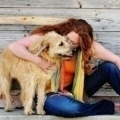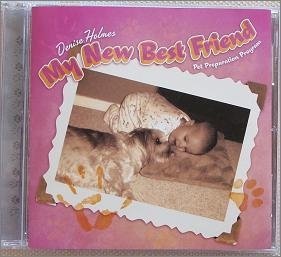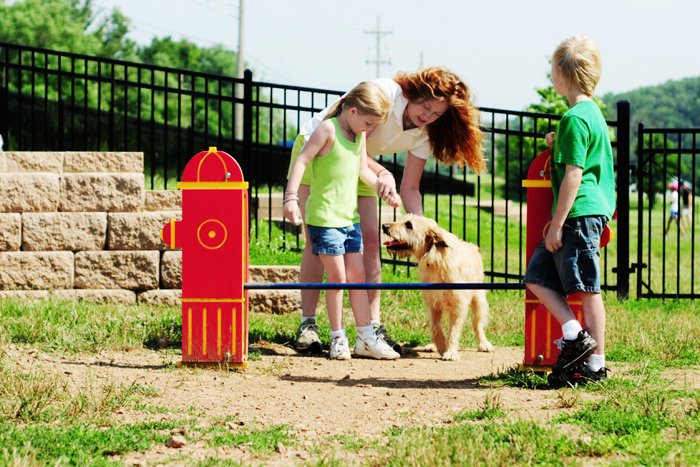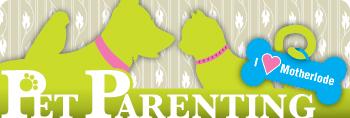Purely by accident! I have always worked with animals, training my own pets, the neighbors animals, etc, and I was always good at it. However, my degree is in microbiology (i do have a minor in psych).
I went to school with the intentions of being a physician. After college, I was tired of school and had to be realistic about my study habits. I was looking for a job in pharmaceuticals, but there were a lot of changes going on in that industry at the time, and there was a lot of competition for jobs.
I knew it could take a few months, and when a friend suggested I apply for a job as the in-store trainer at a local large chain store, I did. This was way before Caesar had a TV show, and it had never occurred to me that something that came so naturally to me, was a service for which I could charge people. I had always just done it. When I left there, with zero intention of starting a business, my students came with me, calling me and asking me to finish their training. I felt I owed them that, so I did. Then, based simply on the referrals I received from those first few students, and the relationships I had built with local rescues and veterinarians, I started my business.
Q: You go to people’s houses to help with pet behavior problems, right?
 Yes, I do, but I also offer a lot more (and not just with dogs). We can go anywhere the problem exists. I’ve worked at the park, the vet clinic, on the grooming table, you name it. In the beginning, I offered classes as part of my business, but this is just so much more personal. I really have the opportunity to get to know people, and customize a training program that gives families exactly what they want and need. And seeing the problem in action with my own eyes, gives me a much better perspective than relying solely on what a pet parent is able to tell me.
Yes, I do, but I also offer a lot more (and not just with dogs). We can go anywhere the problem exists. I’ve worked at the park, the vet clinic, on the grooming table, you name it. In the beginning, I offered classes as part of my business, but this is just so much more personal. I really have the opportunity to get to know people, and customize a training program that gives families exactly what they want and need. And seeing the problem in action with my own eyes, gives me a much better perspective than relying solely on what a pet parent is able to tell me.
Q: What’s the most common problem that your clients in Northwest Arkansas have with their pets?
Potty training and door manners are the two things that seem to most frustrate people; no one wants a dog going in the house, and not having door manners is not only a nuisance to guests, but can be dangerous to the animal if they run into the street. I also get quite a few calls about aggression. However, I think in general, just establishing a basis of communication with another species can be difficult. I like to think I help translate.
Q: Can you tell us about some unusual problems you’ve encountered?
I once had a client whose (little) dog was afraid to walk into the living room. They had tried everything they knew, but couldn’t solve the problem or figure out why the problem existed. We scheduled an appointment so that I could observe the behavior.
If you called the dog into the living room, it would run down the hall, then get real close to the wall and sort of ‘sneak’ into the living room. It only took a few minutes to realize that mounted above the fireplace was a replica of a Bald Eagle with wings and talons in full extension as if swooping in on prey.
I had them take the eagle off the wall and place it on the floor. We let the little dog sniff it, reluctantly at first, but then a little more confidently. I suggested that the mount stay on the floor for a few days, then they could try putting it back in place. Once the dog realized it wasn’t real, and it wasn’t going to eat him, the eagle went back on the wall and there were no more problems.
Another case that sticks in my mind was a dog named Gracie. She had grass allergies, but HATED to have her feet touched, and she was quite nasty about it. Over the course of many sessions, we able to teach her to plunge her feet into a water bucket and then dry them on a towel herself. This was one of those times when the solution wasn’t entirely clear when I first met the family, but ‘revealed’ itself over the course of time. We were actually working on something completely different when it occurred to me that we might be able to teach her to do that. I like it when that happens! It’s amazing what you can learn or figure out when you get to know the animals and their families.
Q: Can you share with us a few of the programs you’ve helped develop to help people and pets?
I have been very involved with animal-assisted therapy, even before beginning my business, but it’s not about helping people and pets, it’s about pets helping people, and it is something about which I am very passionate.
Animals can do amazing things. My proudest accomplishment is the work I did with Arkansas Children’s Hospital in 2000. They did not, at that time, have a visiting animal program, and the people who wanted one, were being met with resistance. I worked very closely with Esther Pipkin in Child Life, to help develop and coordinate a research project that would validate the impact animals could have on the children.
From the results of that study the TAILS program was created, and is now 12 years strong. I occasionally get the chance to go to ACH and watch the kids in the playroom interact with the dogs (they also do room visits, by ‘prescription’). Anyone who witnesses that knows the value of it; watching a child forget their illness, even for a moment, can bring tears to your eyes.
 In NWA, I was very active in starting the Sit. Stay. Read! program at the Fayetteville Public Library. What began as an in-library referral-based (from teachers in the school district) program on Saturday mornings, is now in all but one Fayetteville elementary school, including St. Joseph’s. I am very proud of what Lolly Greenwood, and the Sit. Stay. Read! volunteers have accomplished. Emerging and struggling readers are being taught and encouraged simply by reading out loud to a dog! It’s really wonderful work, and I get very excited when I see that a new client might have the potential or desire to do therapy.
In NWA, I was very active in starting the Sit. Stay. Read! program at the Fayetteville Public Library. What began as an in-library referral-based (from teachers in the school district) program on Saturday mornings, is now in all but one Fayetteville elementary school, including St. Joseph’s. I am very proud of what Lolly Greenwood, and the Sit. Stay. Read! volunteers have accomplished. Emerging and struggling readers are being taught and encouraged simply by reading out loud to a dog! It’s really wonderful work, and I get very excited when I see that a new client might have the potential or desire to do therapy.
Q: Where can people find your CD that helps introduce pets to new babies/children?
 My New Best Friend: The CD is available at Terra Tots in Springdale, through the Humane Society of the Ozarks (proceeds benefit the organization), the Freckled Frog in Little Rock, and through Amazon.com. I suggest that if someone is expecting their first baby, they get the CD as soon as possible and begin working through the sounds and the recommended steps. It also makes a great gift if you pair it with a Kong, and some Comfort Zone (two products recommended in the instructions).
My New Best Friend: The CD is available at Terra Tots in Springdale, through the Humane Society of the Ozarks (proceeds benefit the organization), the Freckled Frog in Little Rock, and through Amazon.com. I suggest that if someone is expecting their first baby, they get the CD as soon as possible and begin working through the sounds and the recommended steps. It also makes a great gift if you pair it with a Kong, and some Comfort Zone (two products recommended in the instructions).
Q: Your tagline on your website is “Love.Trust.Teach”? Tell us why those three words are so important to you.
I truly believe that’s the way it is, that’s the order of things. You can’t teach anyone, anything if they don’t trust you, they just aren’t going to care what you say. But if you have an honest, genuine love for them, they will feel that, and they will, eventually and sometimes with work, trust you. I think it goes for humans and animals both, really.







